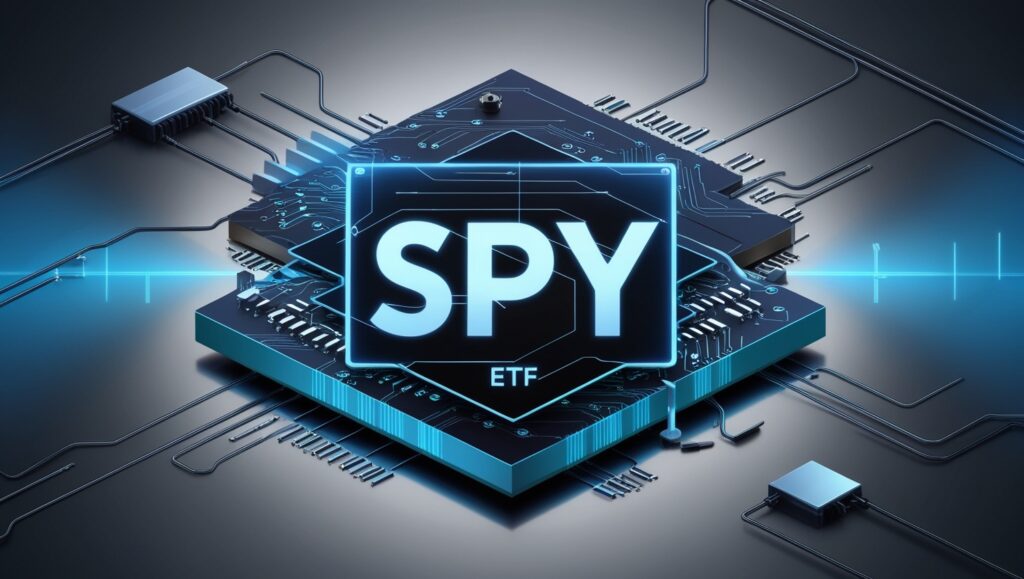The SPDR S&P 500 ETF Trust, commonly known as Spy Etf, is one of the world’s most popular exchange-traded funds (ETFs). Launched in 1993, SPY aims to provide investment results that correspond to the performance of the S&P 500 Index, which consists of 500 of the largest publicly traded companies in the United States. This article will explore the various aspects of SPY, including its structure, benefits, risks, and how it fits into an investment strategy.
What is an ETF?
Before delving into the specifics of Spy Etf, it’s essential to understand what an ETF is.ETFs offer several advantages, including diversification, liquidity, and cost-effectiveness, making them an attractive option for investors of all levels.
The Structure of SPY
Economy, as the S&P 500 represents about 80% of the total market capitalization of U.S. stocks.
How SPY Works
Spy Etf operates under a unique structure that allows it to trade like a stock while maintaining the characteristics of a mutual fund. It is composed of shares that represent fractional ownership of the underlying assets. The ETF’s manager buys and sells the underlying securities to maintain the fund’s performance in line with the S&P 500 Index. This process, known as “in-kind” creation and redemption, helps keep the ETF’s price close to its net asset value (NAV).
The Benefits of Investing in SPY
Investing in Spy Etf offers several advantages, making it an appealing choice for both novice and seasoned investors.
Diversification
One of the primary benefits of Spy Etf is diversification. Investing in a single ETF exposes investors to 500 different companies across various sectors. This diversification helps reduce individual stock risk, as the performance of any single company has a limited impact on the overall portfolio.
Liquidity
Its high trading volume means investors can buy and sell shares without significant price fluctuations. This liquidity is crucial for those who need to enter or exit positions quickly, especially in volatile market conditions.

Low Expense Ratios
Compared to mutual funds, Spy Etf typically has lower expense ratios. This means investors keep more of their returns, as less investment is spent on management fees. Lower costs can significantly impact long-term investment performance.
Easy Access to Large-Cap Stocks
SPY provides investors an easy way to gain exposure to large-cap U.S. stocks. These companies are more stable and less volatile than smaller firms, making Spy Etf a relatively safe investment option for those seeking long-term growth.
Risks Associated with SPY
While SPY offers many benefits, it is not without risks.
Market Risk
Spy Etf performance is closely tied to the overall performance of the S&P 500 Index. This means that SPY will likely experience a similar decline if the market declines. Market risk is inherent in any equity investment and can be exacerbated during economic downturns.
Sector Concentration
While Spy Etf provides diversification across many sectors, it can also be exposed to sector concentration risk. For instance, if a significant portion of the S&P 500 consists of technology stocks, any downturn in that sector could negatively impact SPY’s performance.
Tracking Error
Although SPY aims to replicate the performance of the S&P 500, there may be discrepancies known as tracking errors. This can occur due to various factors, such as management fees, operational costs, or the timing of trades. While Spy Etf generally has a low tracking error, investors should know it.
How to Invest in SPY
Investing in SPY is relatively straightforward, making it accessible to many investors. Here’s a step-by-step guide on how to invest in SPY:
Choose a Brokerage
To invest in Spy Etf, you’ll need a brokerage account. Choose a reputable broker that offers competitive commissions and an easy-to-use trading platform. Many brokers also provide educational resources to help you make informed investment decisions.

Fund Your Account
Once you’ve chosen a broker, fund your account through a bank transfer, wire transfer, or other accepted methods. Ensure you have enough capital to cover the price of the Spy Etf shares you wish to purchase and any transaction fees.
Place Your Order
After funding your account, you can place an order for Spy Etf. You can choose between a market order, which buys at the current market price, or a limit order, which specifies the price you are willing to pay. The order will be executed once the market reaches your specified price.
Monitor Your Investment
After purchasing SPY shares, it’s crucial to monitor your investment regularly. Monitor market trends, economic indicators, and news related to the S&P 500. This information can help you decide about holding or selling your investment.
SPY in a Long-Term Investment Strategy
Incorporating SPY into a long-term investment strategy can be an effective way to build wealth. Its diversified nature and low expense ratios make it an attractive option for those looking to achieve long-term growth.
Dollar-Cost Averaging
One strategy investors often use with SPY is dollar-cost averaging. This involves regularly investing a fixed amount of money into SPY, regardless of price. This approach can help mitigate the impact of market volatility and reduce the risk of making poorly timed investments.

Rebalancing Your Portfolio
As with any investment, it’s essential to rebalance your portfolio periodically. This means reviewing your asset allocation and making adjustments as needed. For example, suppose SPY has performed well and now represents a larger percentage of your portfolio than intended. In that case, you may want to sell some shares and reinvest the proceeds in other asset classes to maintain your desired allocation.
Conclusion
The SPDR S&P 500 ETF (Spy Etf) is an excellent investment vehicle for those seeking exposure to the U.S. stock market. Its diversification, liquidity, and low expense ratios make it an attractive choice for novice and experienced investors. However, it’s essential to be aware of the risks associated with investing in SPY, including market risk and sector concentration.
By understanding Spy Etf structure, benefits, and risks, investors can make informed decisions about incorporating it into their investment strategy. Whether you’re a long-term investor or looking to capitalize on short-term market trends, SPY offers a versatile option to help you achieve your financial goals.
FAQs
What is the primary objective of the SPY ETF?
The primary objective of the SPY ETF is to provide investment results that correspond to the performance of the S&P 500 Index, allowing investors to gain exposure to a broad range of U.S. large-cap stocks.
How is SPY different from mutual funds?
SPY is an exchange-traded fund that trades on an exchange like stock. Unlike mutual funds, which are priced once a day after the market closes, SPY can be bought and sold throughout the trading day at market prices.
What are the fees associated with investing in SPY?
SPY typically has a low expense ratio compared to mutual funds. However, investors should also consider brokerage fees associated with buying and selling shares, which can vary by broker.
Can I invest in SPY through a retirement account?
Yes, as long as your brokerage allows, you can invest in SPY through various retirement accounts, including IRAs and 401(k)s.
What is the historical performance of SPY?
While past performance does not indicate future results, SPY has historically tracked the S&P 500 Index closely and provided solid long-term returns, making it a popular choice among investors.

